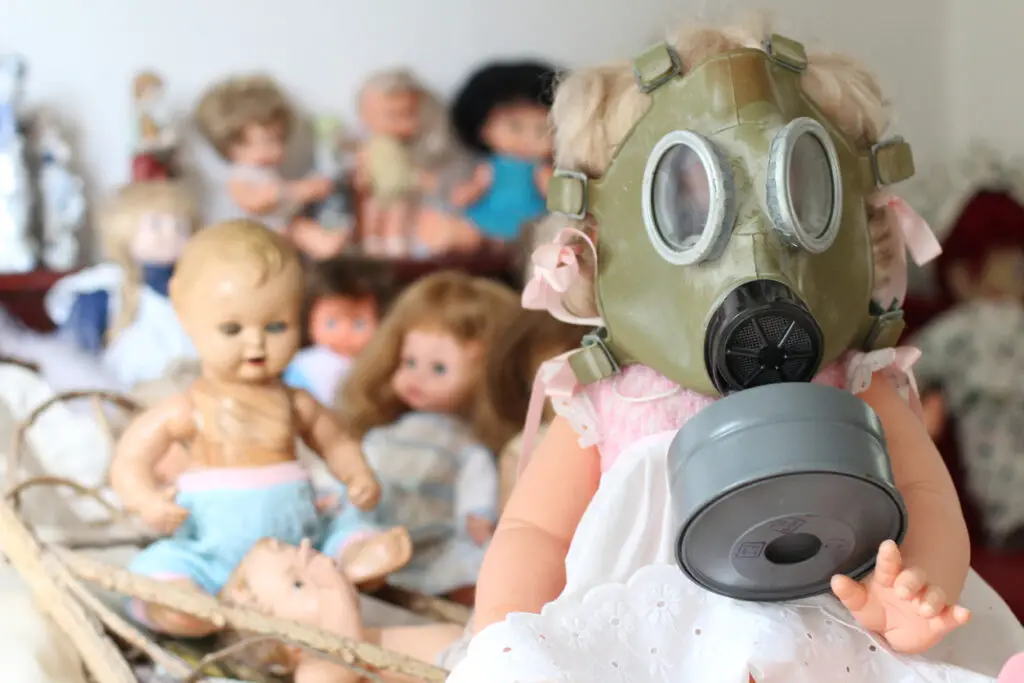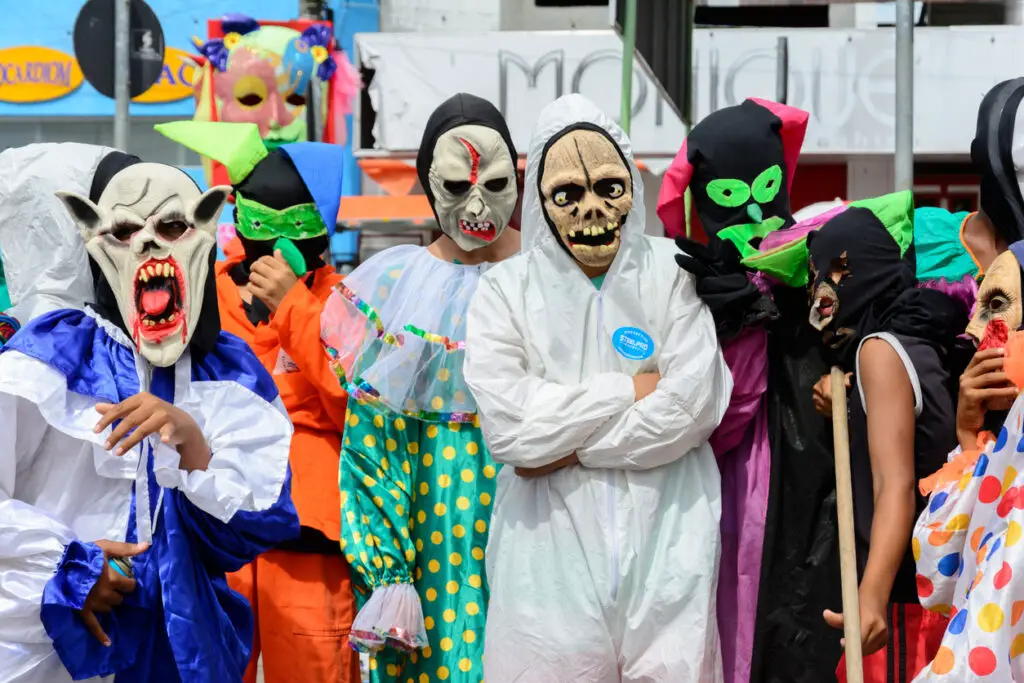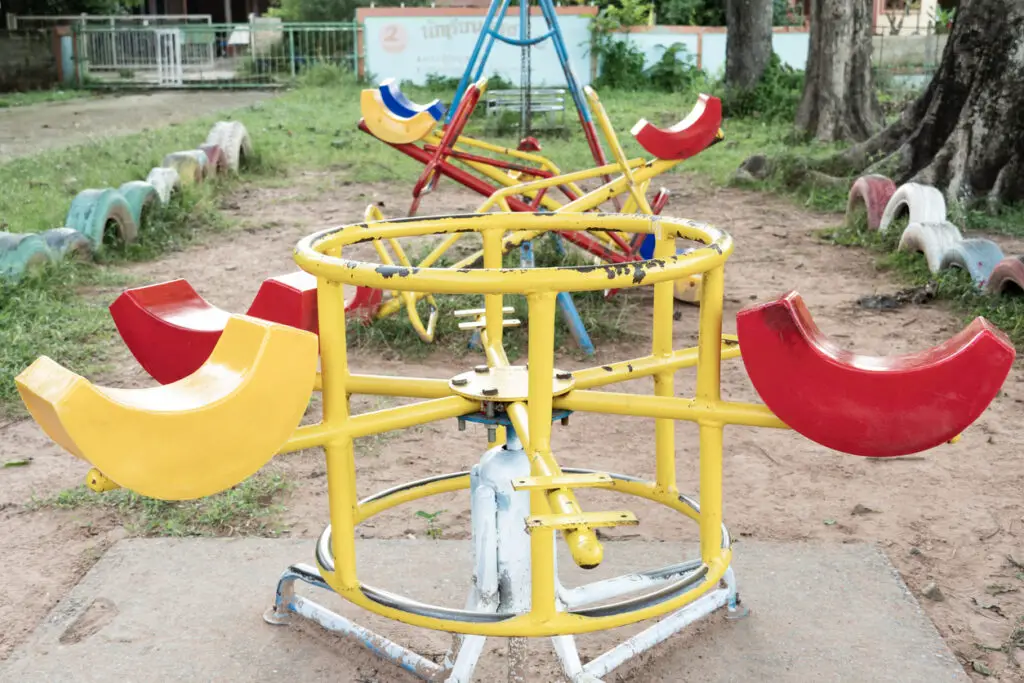1. Smoking Everywhere—Even Around Kids and Indoors

In the 1970s, smoking was so normalized that people did it anywhere and everywhere, with little to no concern for health risks—either for themselves or those around them. It was completely acceptable to smoke in offices, restaurants, airplanes, hospitals, and even inside the home with children present. Ashtrays were a common fixture in schools, hospitals, and office desks, and no one batted an eye when doctors, teachers, or even pregnant women smoked in public. The idea of secondhand smoke being harmful was not widely recognized, and anti-smoking campaigns were virtually nonexistent compared to today.
If someone were to light up a cigarette in a restaurant or airplane cabin today, it would lead to immediate outrage, legal action, and possibly even arrest. Modern health studies have clearly linked smoking to lung cancer, heart disease, and numerous other illnesses, leading to strict anti-smoking laws, bans on cigarette advertisements, and designated smoking areas far away from public spaces. Today, many workplaces have zero-tolerance policies for smoking indoors, and parents who smoke around their children are often criticized for exposing them to harmful toxins. The casual acceptance of smoking everywhere in the ’70s would be absolutely shocking and unacceptable in today’s world.
2. Blatantly Sexist Advertisements and TV Commercials

If you watch commercials from the 1970s, it’s almost jaw-dropping how openly sexist they were. Women were typically portrayed as housewives whose only concern was keeping their husbands happy, often through cooking, cleaning, or using the latest beauty product to remain attractive, according to CNN. Men, on the other hand, were depicted as dominant, career-driven, and completely in control, with advertising reinforcing the idea that a woman’s primary role was to serve and please her husband. It wasn’t uncommon to see ads suggesting that a woman who couldn’t make a good cup of coffee was failing as a wife or that her happiness was entirely dependent on male approval.
One of the most infamous examples was a series of coffee commercials where a husband scolds his wife for making bad coffee, looking visibly disappointed as if she had ruined his entire day. Other ads shamelessly used sex appeal to sell products, featuring women in highly suggestive poses for items as mundane as cars, shaving cream, and even household cleaning supplies. If these commercials aired today, there would be an instant social media backlash, with major brands facing boycotts and public pressure to apologize and change their messaging. The rise of feminist and gender equality movements has made modern audiences far less tolerant of misogynistic advertising, proving that the marketing norms of the ’70s wouldn’t stand a chance today.
3. Highly Inappropriate “Age-Gap” Relationships in Media and Celebrity Culture

One of the most disturbing trends of the 1970s was how normalized large age-gap relationships were, especially when involving underage girls and much older men. In movies, TV shows, and even real-life celebrity relationships, it was not uncommon to see a grown man romantically involved with a teenage girl, often portrayed as romantic rather than predatory. The media rarely questioned these relationships, and in some cases, they were glorified as exciting and passionate affairs rather than deeply problematic.
A shocking example was the 1979 film “Manhattan”, where Woody Allen’s character, a 42-year-old man, is dating a 17-year-old girl, and the relationship is presented as completely normal. Meanwhile, real-life celebrity relationships followed the same troubling pattern—rock stars, actors, and famous directors were often romantically linked to teenagers, and it was largely ignored or even celebrated by the media. Today, such relationships would be met with massive public outrage, accusations of grooming, and possibly even legal consequences. There is now greater awareness of power dynamics, consent, and the long-term psychological impact of such relationships, making it unthinkable for them to be casually accepted as they were in the ’70s.
4. Unregulated Dangerous Toys That Would Be Banned Today

Children’s toys in the ’70s were wildly unregulated, and many of them would be considered safety hazards today. Back then, there were few government safety standards, meaning toy companies could sell products that were poorly designed, hazardous, and even toxic, according to Love to Know. Many toys contained lead-based paint, small choking hazards, or sharp edges, and some even had flammable materials that could catch fire easily. The lack of child safety awareness meant that injuries from toys were shockingly common, yet manufacturers were rarely held accountable.
One of the most dangerous toys of the era was the infamous “Clackers”, which featured two heavy acrylic balls attached to a string that kids swung together until they clashed. The problem? These balls often shattered into sharp pieces, causing eye injuries and deep cuts. Another horrifying example was the “Gilbert U-238 Atomic Energy Lab”, a science kit that contained actual radioactive material for children to experiment with. Today, such toys would be immediately recalled, and the companies responsible would face massive lawsuits and government intervention. Thanks to modern safety regulations, parents today would be horrified by the sheer lack of concern for children’s well-being in ’70s-era toy manufacturing.
5. Racially Insensitive Halloween Costumes and Media Stereotypes

The 1970s had an alarmingly casual approach to racial and cultural representation, with little concern for offensive portrayals or stereotypes. It was common to see blackface in comedy sketches, TV shows that mocked ethnic accents, and characters played by white actors in dark makeup to “represent” other races. Hollywood often portrayed Native Americans, Asians, and Hispanics through exaggerated, offensive tropes, reducing entire cultures to caricatures. Even major movies and children’s cartoons often featured blatantly racist depictions, with little to no public backlash at the time.
Halloween costumes from this era were no better. It was completely socially acceptable for white people to dress as Native Americans, geishas, or Middle Eastern characters, often in exaggerated, disrespectful ways. These costumes weren’t just culturally insensitive—they reinforced harmful stereotypes that still impact marginalized groups today. If someone wore these costumes now, they would face immediate public outrage, social media backlash, and widespread criticism for cultural appropriation. Today, people are much more aware of the importance of respecting different cultures, and what was once considered a fun costume choice in the ’70s is now seen as deeply offensive and unacceptable.
6. Lack of Seat Belts and Child Car Seats—A Parental Nightmare Today

In the 1970s, seat belt laws barely existed, and car safety was almost an afterthought. People routinely drove without buckling up, and in many cases, cars weren’t even manufactured with proper seat belts in the back seats, according to Arizona. Children often rode in cars completely unrestrained, sitting in their parents’ laps or bouncing around in the backseat without a care. There were almost no legal requirements for child car seats, and the few that existed were often poorly designed, offering little real protection in the event of a crash.
Today, not wearing a seat belt is illegal in most countries, and parents who fail to properly secure their children in a car seat can face heavy fines or even criminal charges. Studies have proven that seat belts drastically reduce the risk of injury or death in an accident, and modern cars are built with extensive safety features that would have been unheard of in the 1970s. If people drove today the way they did back then, it would be seen as incredibly reckless and irresponsible, with public outrage toward anyone who endangered themselves or their children by ignoring safety precautions.
7. Fat-Shaming and Unrealistic Beauty Standards in Advertising

The 1970s had an incredibly toxic culture when it came to body image, with advertisements and media constantly mocking people who didn’t fit into a specific beauty standard. Weight-loss ads from this era were shockingly cruel, using messages that outright insulted people for being overweight. There were numerous ads that suggested a woman’s self-worth depended entirely on being thin, with taglines like “No man will love you if you’re fat” or “Get thin now, or die alone.” These extreme tactics weren’t just limited to women—men, too, were told that being out of shape made them less desirable, weak, or unworthy.
Today, these kinds of ads would cause instant outrage, social media firestorms, and widespread boycotts. The rise of body positivity movements and the push for mental health awareness have made people far less tolerant of shaming individuals for their body shape. While discussions around health and fitness are still relevant, modern advertising has largely moved away from publicly humiliating people to sell products. If a company used 1970s-style fat-shaming in their marketing today, they would likely face immediate backlash and financial ruin from outraged consumers.
8. Animal Cruelty in Entertainment and Advertising

The 1970s had a shockingly casual approach to animal welfare, particularly in entertainment, advertising, and product testing. Many TV shows and movies used real animals in dangerous stunts, often with little concern for their well-being, according to Wikipedia. Circuses and roadside attractions often exploited wild animals, keeping them in horrific conditions with minimal regulation. Even in mainstream media, companies had no problem showcasing real animal abuse in ads or product demonstrations—whether it was testing cosmetics on rabbits or using live animals as props with no regard for their safety.
Today, attitudes toward animal rights have drastically changed, and what was once accepted as normal is now seen as cruel and inhumane. The rise of organizations like PETA and the increased awareness of ethical treatment have made animal exploitation in media completely unacceptable. If a brand today was caught mistreating animals, they would face global outrage, lawsuits, and massive protests. Many industries have been forced to change their practices, proving that the reckless disregard for animal welfare in the ’70s would never fly in the modern world.
9. Dangerous Diet Pills and Unregulated Weight Loss Drugs

The 1970s were a golden era for dangerous diet fads, and the most extreme of them involved highly unsafe weight loss pills that were sold with little to no regulation. According to PubMed Central, these pills were often loaded with amphetamines, laxatives, and other dangerous chemicals, with companies promising fast results without any concern for health risks. Many people—especially women—took these pills without realizing they were essentially speed, leading to severe addiction, heart problems, and in some cases, death. The diet industry thrived on selling quick fixes, and companies faced very little scrutiny for the harm they caused.
If these products were sold today, there would be an immediate public health crisis, lawsuits, and government intervention. The modern understanding of nutrition and wellness has led to strict regulations on diet pills, requiring them to be tested for safety and effectiveness. Today, the idea of openly marketing amphetamines as weight loss solutions would be seen as highly unethical and illegal, and the companies responsible would be shut down almost immediately. This is an prime example of how public health awareness has drastically improved, making the reckless approach to weight loss in the ’70s completely unacceptable today.
10. Casual Workplace Harassment That Was Brushed Off as “Normal”

In the 1970s, the workplace was a completely different environment, and not in a good way. Women, in particular, faced constant harassment, inappropriate comments, and unwanted advances from male colleagues and bosses, yet there were no real laws or protections in place to stop it. It was common for male employees to openly flirt with, grope, or make sexual jokes about female coworkers, and women were expected to simply laugh it off or play along. If they complained or spoke up, they risked being mocked, fired, or blacklisted from their careers. The idea of HR departments enforcing strict anti-harassment policies was practically nonexistent, and many companies had cultures that openly tolerated or even encouraged this behavior.
If a workplace today functioned like a typical office from the 1970s, it would be shut down by lawsuits, public scandals, and social media outrage within days. The #MeToo movement and stronger legal protections have made sexual harassment a serious offense, and many businesses now have strict policies to prevent and address misconduct. Today, any boss who made inappropriate advances toward an employee would be at risk of losing their job and facing legal consequences, whereas in the ‘1970s, it was often seen as just another “perk” of being in power. The cultural shift has been massive, and the blatant harassment that was once ignored would be completely unacceptable today.
11. Parents Letting Their Kids Roam Free Without Supervision

Back in the 1970s, parenting was shockingly hands-off by today’s standards. It was completely normal for kids to disappear for hours or even the entire day, playing outside, riding bikes miles away from home, or exploring abandoned places without a single adult in sight. Many parents believed that as long as their kids were home by dinner, there was nothing to worry about, and there was far less concern about kidnappings, accidents, or other dangers. Strangers were often trusted without question, and hitchhiking was something even teenagers did regularly. Seat belts were rarely used, helmets were unheard of, and kids were left alone at home at very young ages.
If a parent let their child roam freely like this today, they could easily face a visit from Child Protective Services (CPS), accusations of neglect, or even criminal charges. Modern parenting focuses far more on constant supervision, structured playdates, and safety precautions. Today’s world is more aware of child predators, traffic accidents, and other potential dangers, making the idea of kids wandering around unsupervised completely unacceptable. While some argue that modern parenting has become overprotective, the idea of letting children run wild without safety measures like in the ’70s would cause widespread outrage and concern today.
12. Insanely Dangerous Playground Equipment That Would Be Illegal Today

Playgrounds in the 1970s were a free-for-all when it came to safety hazards, featuring hard metal slides that got scorching hot in the sun, jungle gyms placed over concrete, and merry-go-rounds that could fling children into the air at high speeds. Swings were often made of heavy metal chains, seesaws could easily launch a child into the ground, and there were no padded surfaces, rubber flooring, or enclosed play areas to cushion falls. Kids often suffered broken bones, bruises, and even concussions, but back then, it was just seen as part of growing up. Parents rarely sued or complained when their children got hurt, and there were no strict safety regulations forcing manufacturers to design safer playgrounds.
If a playground like this existed today, parents would be outraged, lawsuits would pile up, and the city or school responsible would be forced to shut it down immediately. Modern playgrounds are designed with soft padding, enclosed spaces, and height restrictions to ensure maximum safety for kids. The idea of letting children play on a 12-foot metal slide with no safety rail or a jungle gym built over solid concrete would be seen as gross negligence, and parents would demand immediate changes. The massive shift in child safety awareness has made the reckless playground designs of the ’70s completely unacceptable in today’s world.
13. Shockingly Offensive Comedy That Mocked Marginalized Groups

Comedy in the 1970s was far more offensive and unapologetic than what is acceptable today. Many stand-up comedians, sitcoms, and late-night talk shows routinely used racial slurs, sexist jokes, and homophobic humor without any backlash. Making fun of minorities, women, LGBTQ+ individuals, and people with disabilities was standard entertainment, and entire TV shows were built around mocking certain groups. Racially offensive caricatures were widely accepted, and words that are now considered completely unacceptable slurs were used casually on mainstream television.
If these kinds of jokes aired today, they would face immediate backlash, social media boycotts, and calls for cancellation. Comedians today still push boundaries, but there is a greater emphasis on respecting different communities rather than punching down at marginalized groups. The public has become far more aware of the harm that offensive humor can cause, and networks are much more cautious about airing content that could be considered racist, sexist, or discriminatory. If a comedian today used the same jokes that were common in the ’70s, they would face massive public outrage, potential career-ending controversy, and pressure to apologize.


